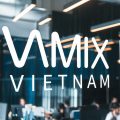Công nghệ chuyển âm thanh thành văn bản và tóm tắt đang dần trở thành công cụ hỗ trợ đắc lực trong việc ghi chú hiện đại.
Một trong những ứng dụng nổi bật của công nghệ trí tuệ nhân tạo trong lĩnh vực này là vMixTrans AI – giải pháp giúp bạn giải phóng thời gian với dịch vụ gỡ băng và chuyển đổi file audio, video thành văn bản một cách siêu tốc và chính xác.
vMixTrans AI tự động nhận diện người nói, thêm dấu câu và hỗ trợ hơn 90 ngôn ngữ, mang lại trải nghiệm ghi chú tiện lợi và hiệu quả cao.
Tuy nhiên, bên cạnh những ưu điểm rõ ràng, vẫn tồn tại nhiều thách thức mà công nghệ cần vượt qua để thực sự tối ưu hóa trải nghiệm người dùng trong tương lai.
Để tìm hiểu thêm, bạn có thể truy cập vào website: https://vmixgpt.com/chuyen-file-am-thanh-thanh-van-ban-vmixtrans-ai/.
Những điểm chính
- AI nâng cao độ chính xác và hiểu biết ngữ cảnh khi chuyển âm thanh thành văn bản giúp ghi chú chính xác hơn.
- Tích hợp công nghệ đa phương tiện tạo ghi chú phong phú và dễ hiểu hơn cho người dùng.
- Thuật toán tóm tắt thông minh rút gọn nội dung dài, giúp nắm bắt nhanh các điểm trọng yếu.
- Học máy cá nhân hóa phong cách ghi chú phù hợp với từng người dùng, tối ưu trải nghiệm sử dụng.
- Tăng cường cộng tác thời gian thực và đồng bộ dữ liệu trên nhiều thiết bị, thúc đẩy làm việc nhóm hiệu quả.
Công nghệ chuyển đổi âm thanh thành văn bản hoạt động như thế nào

Although often perceived as complex, công nghệ chuyển đổi âm thanh thành văn bản operates through a sequence of systematic processes that transform spoken language into written text. Initially, the system captures audio input using microphones or digital recordings. This audio undergoes preprocessing to reduce noise and enhance clarity, improving recognition accuracy. Subsequently, the processed sound is segmented into smaller units, such as phonemes or words, enabling detailed analysis. Acoustic models then analyze these units, matching audio patterns with corresponding linguistic components based on statistical probabilities. Language models contribute contextual understanding, ensuring the transcription aligns with grammatical and syntactical norms. The system continuously refines its output by comparing recognized words with extensive language databases, correcting potential errors. Finally, the recognized speech is converted into editable text, ready for user interaction or further processing. This layered approach allows the technology to handle diverse accents, speech rates, and vocabularies efficiently, making real-time transcription increasingly reliable and accessible.
Lợi ích của việc sử dụng AI trong ghi chú và tóm tắt
Khi tích hợp trí tuệ nhân tạo vào quá trình ghi chú và tóm tắt, người dùng có thể tận dụng khả năng xử lý nhanh chóng và chính xác của AI để nâng cao hiệu quả làm việc. AI giúp tự động chuyển đổi âm thanh thành văn bản, giảm thời gian ghi chép thủ công và hạn chế sai sót do con người. Ngoài ra, công nghệ này còn có khả năng tóm tắt nội dung dài, giúp người dùng dễ dàng nắm bắt thông tin trọng yếu mà không cần đọc toàn bộ tài liệu. Việc sử dụng AI cũng hỗ trợ tổ chức dữ liệu hiệu quả hơn, tăng khả năng tìm kiếm và truy xuất thông tin nhanh chóng. Hơn nữa, AI cho phép đồng bộ hóa và lưu trữ ghi chú trên nhiều thiết bị, tạo thuận lợi cho việc cộng tác và chia sẻ thông tin trong nhóm. Nhờ đó, AI không chỉ nâng cao năng suất cá nhân mà còn cải thiện chất lượng công việc chung.
Ứng dụng thực tiễn của công nghệ chuyển âm thanh thành văn bản trong các lĩnh vực

Công nghệ chuyển âm thanh thành văn bản đã trở thành công cụ quan trọng trong nhiều lĩnh vực nhờ khả năng tự động hóa quá trình ghi chép và tối ưu hóa quản lý thông tin. Trong giáo dục, công nghệ này giúp ghi lại bài giảng, hỗ trợ sinh viên tiếp cận nội dung dễ dàng và nâng cao hiệu quả học tập. Ngành y tế ứng dụng để ghi chép nhanh chóng các cuộc thảo luận giữa bác sĩ và bệnh nhân, giảm sai sót và cải thiện hồ sơ bệnh án. Trong doanh nghiệp, việc chuyển đổi cuộc họp thành văn bản giúp lưu trữ thông tin chính xác, tăng cường phối hợp nội bộ và rút ngắn thời gian tổng hợp báo cáo. Ngoài ra, lĩnh vực truyền thông và pháp lý cũng tận dụng công nghệ này để phiên dịch phỏng vấn, tài liệu pháp lý, giúp tiết kiệm thời gian và nâng cao độ chính xác của dữ liệu ghi nhận.
Thách thức và hạn chế hiện tại của AI trong việc xử lý ghi chú
Despite significant advancements, AI still faces notable challenges in accurately processing and managing notes. One primary limitation is the difficulty in understanding diverse accents, dialects, and speech nuances, which often leads to transcription errors. Background noise and overlapping conversations further degrade speech recognition accuracy. Additionally, AI struggles with contextual comprehension, making it hard to correctly interpret homonyms, idioms, or specialized terminology without human-like reasoning. Privacy concerns also arise, as sensitive information within notes requires stringent data protection measures. Furthermore, current summarization algorithms may omit critical details or fail to capture the intended emphasis, reducing the usefulness of AI-generated summaries. Integration with various note-taking platforms remains inconsistent, limiting seamless user experience. Finally, AI models demand significant computational resources, posing challenges for real-time processing on mobile or low-power devices. These constraints highlight the ongoing need for refinement before AI can fully replace traditional note-taking methods.
Triển vọng phát triển tương lai của công nghệ ghi chú thông minh

Advancements in artificial intelligence are poised to revolutionize smart note-taking technologies by enhancing accuracy, contextual understanding, and user customization. Future developments will likely integrate multimodal data processing, allowing AI to combine audio, visual, and textual inputs for richer, more thorough notes. Enhanced natural language processing models will improve summarization quality, capturing nuanced meanings and complex ideas effectively. Additionally, adaptive learning algorithms will tailor note-taking styles to individual preferences and professional needs, increasing productivity and relevance. Real-time collaboration features powered by AI will facilitate seamless sharing and editing, transforming group workflows. Privacy and security measures will advance concurrently, addressing concerns over sensitive information handling. Moreover, integration with broader digital ecosystems, such as calendars, task managers, and knowledge bases, will create interconnected environments that streamline information management. These innovations suggest a future where smart note-taking is not merely transcription but an intelligent assistant that anticipates user needs and optimizes knowledge capture and retrieval.



